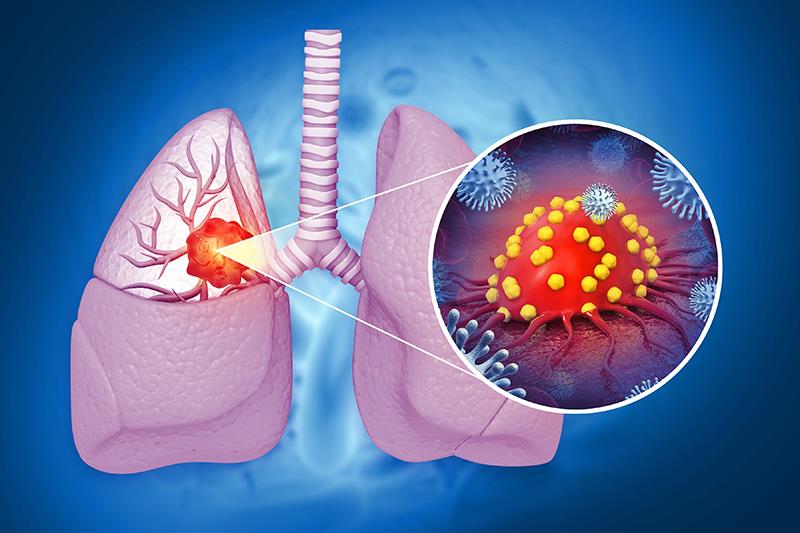Aumolertinib ups PFS in EGFR-mutated NSCLC





Treatment with aumolertinib significantly prolonged progression-free survival (PFS) compared with placebo in patients with unresectable stage III EGFR-mutated non-small cell lung cancer (NSCLC) who did not experience disease progression following chemoradiotherapy (CRT), according to a preplanned interim analysis of the phase III POLESTAR trial presented at WCLC 2024.
As per the BICR* assessment, patients who received aumolertinib had a significantly longer median PFS than those who received placebo (30.4 vs 3.8 months; hazard ratio [HR], 0.2000; p<0.0001), which translated to an 80-percent reduction in the risk of disease progression or death. [WCLC 2024, abstract PL04.13]
There was also a higher 12-month PFS rate among patients treated with aumolertinib as compared with placebo (69 percent vs 21 percent).
The BICR-assessed PFS benefit of aumolertinib over placebo was also observed across all subgroups, noted Meng.
“In this study, aumolertinib exhibited a statistically and clinically significant improvement in PFS compared with the placebo, as assessed by BICR, in patients with unresectable stage III EGFR-mutated NSCLC following definitive CRT,” said lead author Dr Xiangjiao Meng from Shandong Cancer Hospital and Institute at Shandong First Medical University in Jinan, China.
Aumolertinib, a third-generation EGFR tyrosine kinase inhibitor, has demonstrated established efficacy in both first- and second-line treatments of EGFR-mutated NSCLC and has received regulatory approval in China, she highlighted.
The POLESTAR trial enrolled 147 patients with unresectable stage III EGFR-mutated NSCLC recruited from 43 sites in China. Participants were randomized 2:1 to receive either aumolertinib 110 mg once/day (n=94; median age 59 years) or a matching placebo (n=53; median age 58 years).
With regard to tumour response, patients on aumolertinib demonstrated a significantly higher overall response rate than those on placebo (57 percent vs 22 percent; odds ratio, 4.58; p<0.0001), with a longer median duration of response (16.59 vs 7.10 months).
The median overall survival (OS) was not reached in either treatment group; the OS data reached a maturity rate of 9.8 percent for aumolertinib and 6.0 percent for placebo.
Additionally, aumolertinib-treated patients were less likely to experience new lesions than placebo-treated patients (20.7 percent vs 58.0 percent).
In terms of safety, 9.6 percent of the patients in the aumolertinib arm had grade ≥3 adverse events (AEs), whereas only 1.9 percent was observed in the placebo arm.
Increased blood creatinine phosphokinase, radiation pneumonitis, and decreased white blood cell count were the most common AEs observed with aumolertinib. No deaths were reported in either treatment arm.
“The overall safety profile of aumolertinib after chemoradiotherapy was well tolerated and manageable with no new safety signals identified,” said Meng.
“Overall, these findings demonstrate aumolertinib as a novel treatment option for patients with unresectable stage III EGFR-mutated NSCLC after CRT,” she noted.